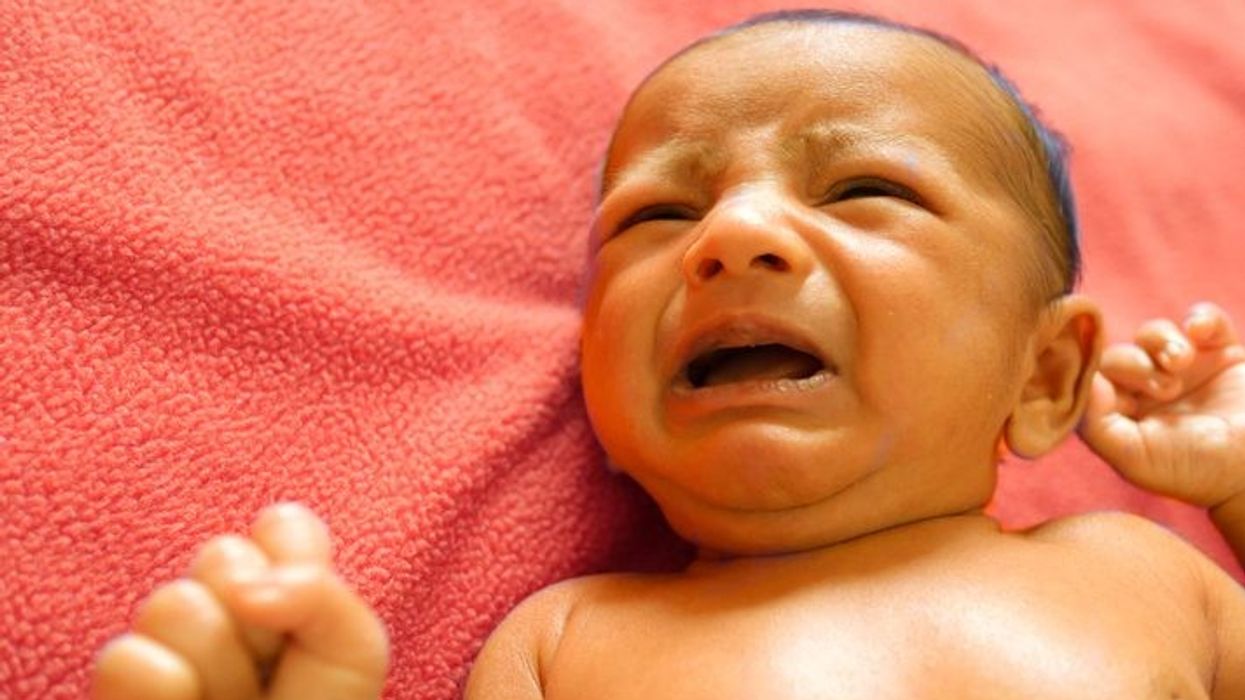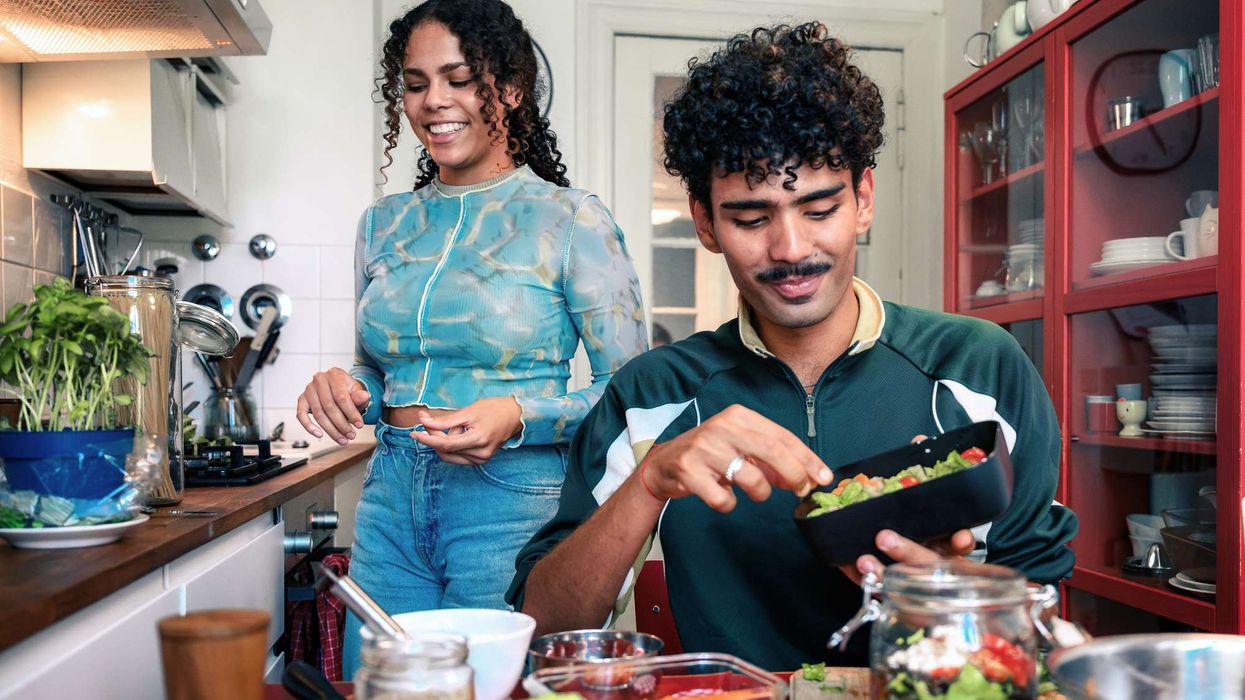A review conducted by the NHS Race and Health Observatory has raised concerns about the focus on skin colour in routine health checks for newborns.
The Apgar score, traditionally used to assess a baby's health immediately after birth, includes checking whether the baby is "pink all over," but the report questions its relevance and accuracy for babies from ethnic minorities.
The review calls for an immediate update of maternity guidelines to address these issues, the BBC reported.
Led by researchers from Sheffield Hallam University, the review also examines the diagnosis of newborn jaundice. It involves interviews with 33 healthcare professionals and 24 parents and reviews scientific literature and policies.
Professor Jacqueline Dunkley-Bent, former chief midwife of England and co-chair of the NHS Race and Health Observatory group, emphasises the need for an unbiased assessment, noting that using terms like "pink" can disregard the diversity of skin colours in the population and raise concerns about clinical accuracy for ethnically diverse populations.
The review found that many people interviewed considered the language used in assessments inappropriate and in need of change.
While some policies used terms such as "pink," "blue," or "pale," most did not consider how this could be assessed on different skin tones.
Healthcare professionals have instinctively adapted the check to account for colour changes around the lips, but there is no consistent, evidence-based approach.
The report also highlights concerns about the "subjective nature" of guidelines for assessing jaundice in newborns, especially for babies from ethnic minorities.
It recommends better training for healthcare staff and parents on how to spot jaundice in such babies and proposes the establishment of a national image database.
The review further stresses the need for more objective outcome measures to address racial bias in these assessments, aiming for a more equitable healthcare system that ensures the wellbeing of all newborns, regardless of their ethnic background.
Additionally, the NHS Race and Health Observatory is planning to fund research into the efficacy of jaundice screening in black, Asian, and minority ethnic newborns, with interim recommendations expected in May 2024 and final recommendations in November 2024.
The research will explore alternative systems and new technologies to improve the accuracy of assessments and diagnosis for non-white children.
Lauren Clarke's case is highlighted as an example where jaundice was initially missed by healthcare staff for her son Jaxson, leading to potentially serious consequences.
In 2019, Lauren, a research practitioner in the East Midlands, gave birth to her son Jaxson. However, it wasn't until he was 6 days old that he was diagnosed with jaundice, and his levels were already dangerously high, requiring urgent treatment. Lauren believes the condition should have been detected and addressed earlier.
She had noticed that Jaxson's eyes and skin appeared yellow during his first few days, but when she approached the staff about it, they merely advised her to "keep an eye" on the situation without providing further guidance.
Even after going home, when a midwife and two maternity support workers visually checked the baby, Lauren felt that her concerns were not listened to.
It was only when she was admitted for treatment for a separate infection that the staff on the ward finally conducted a blood test on Jaxson, revealing the severity of the jaundice.
A junior doctor immediately took him away for rapid light treatment, leaving Lauren feeling distressed as she couldn't feed him and he cried incessantly.
Lauren expressed her belief that if Jaxson had not been of mixed race, the jaundice would have been detected earlier.
Following the incident, the hospital conducted a review, acknowledging that concerns about jaundice should have been escalated.
The review report also suggested that the baby's skin tone might have made it more challenging to determine the progression of jaundice.
Recommendations were put forth, calling for better training for healthcare staff and increased use of handheld meters to measure jaundice levels.
According to the findings of the NHS Race and Health Observatory review, the majority of healthcare professionals stated that identifying jaundice in babies from ethnic minorities was more challenging, and some noted that the level of jaundice appeared to be higher once identified.
Additionally, although clinical guidance and healthcare providers acknowledged the issues with using skin colour to assess jaundice in certain infants, this awareness did not consistently result in policy changes.
The review emphasises the necessity for more consistent training for healthcare professionals and parents in identifying jaundice in babies from ethnic minorities. It also proposes the establishment of a national image database.
Professor Dunkley-Bent and Dr Daghni Rajasingam, co-chairs of the NHS Race and Health Observatory group focusing on maternal and neonatal health, underscore the urgency of the review's recommendations. They assert that objective outcome measures are required to address the impact of racial bias when conducting these assessments.
Their goal is to create a more equitable healthcare system that prioritizes the health and wellbeing of all newborns, regardless of their ethnic background.
Lauren's experience highlights the crucial need for improved training among healthcare professionals to identify jaundice in non-white babies.
It also underscores the importance of incorporating more diverse teaching aids and images in neonatal life support training to address varying presentations in patients with darker skin.
By enhancing awareness and understanding in these areas, healthcare providers can ensure better care for all infants, regardless of their ethnic background.






 Mareyah Bhatti , a sustainability strategist and passionate home cookMareyah Bhatti
Mareyah Bhatti , a sustainability strategist and passionate home cookMareyah Bhatti






